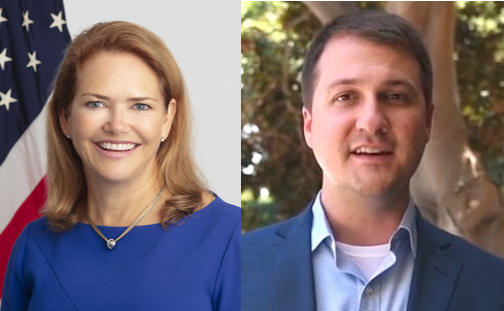Before Amy Abernethy joined the U.S. Food and Drug Administration in early 2019, she had spent time on the faculty of Duke University as an oncologist looking to find ways to harness data to improve clinical care and research.
Now, as FDA principal deputy commissioner and acting chief information officer, those same types of questions she pondered at Duke have taken on deeper dimensions as the agency advances its Technology Modernization Action Plan, first unveiled in September 2019. At the heart of the plan is a desire to capitalize on information technology analytics to deliver its public health mission.
It will also need to leverage new technologies, such as artificial intelligence, to improve the speed and ability to make decisions. For rare diseases, where genetic and clinical data integration can play a critical role in elucidating conditions afflicting small patient populations, Abernethy said it would be necessary for the FDA to embrace new technologies and apply them to its mission.
“The problem that was sitting right in front of us and was so obvious was that we needed to have cloud-based robust technical systems inside the agency in order to receive, organize, and use data,” she said. “And we need to help the life sciences industry all around the agency so essentially the industries that we regulate start to use data and technology as efficiently as possible in order to do this work quickly in the future.”
To achieve its goals, the agency said it needs a strategic approach not only for technology but data itself. Data, it has noted, is at the heart of the FDA’s work as a science-based agency. Moreover, science and technology fuel a rapid increase in the volume and complexity of the data that informs the FDA’s work.
Abernethy said that the FDA plan has three core parts. The first involves getting its technical house in order and making sure it has the talent and capabilities it needs. It will also put together a set of use cases to showcase the range of problems it needs to develop solutions for now and into the future. The third part involves what the agency will need to do to open communication channels with the healthcare technology industry to understand what is essential and what it should be building towards.
That, said Abernethy, highlights the need for the agency’s data strategy, which it announced in January 2020. That data strategy involves how the agency will store and manage data, use advanced analytics like artificial intelligence and other technologies, and its data governance plans.
Abernethy sees the agency’s data efforts accelerating the pace of developing rare disease therapies. One example is the agency allowing companies to apply for orphan drug designation through an electronic process.
A more complicated issue is the integration of real-world evidence into the drug review and monitoring process. “It is clear that we can and should be using data from all sources to understand how patients with diseases fare, and also to help accelerate the development of new drugs for diseases,” she said. “The rare disease space is one of the places where we expect that there are important ways to put real-world data to work.”
As an example, she said that understanding how a new drug performs and how safe it may be will require a reference point. Real-world data can provide comparison information that can also help us to understand how new drugs and new gene therapies for rare diseases perform over time. With some new therapies needed to be monitored for up to 15 years, data solutions and new technologies are needed to allow that to happen.
Last, Abernethy said the new data and technology could allow physicians to make better decisions at the point of care. One of the challenges of rare diseases comes from doctors needing to interrelate genetic information and a person’s past medical history, along with what is known about new drugs and what we need to monitor across time. That’s a lot of complex information that needs to be decided at the point of care.
RARE-X has an opportunity to improve clinical care for people with rare diseases by accelerating diagnosis and therapeutic development. It is a conduit for patients to gather, analyze, and share the type of data critical to the future that Abernethy envisions.
James Valentine, an associate with Hyman, Phelps & McNamara, who previously worked in the FDA’s Office of Health and Constituent Affairs, said any rare disease patient organization today is told to start with data.
“Almost with any new patient advocates coming onto the scene and forming a group, they’re told that a registry or natural history information is something that they need to invest in; they need to build a registry, a natural history study,” said Valentine, who is a regulatory advisor to RARE-X.
He said there’s been a cultural shift to have the patient voice be at the center of drug development, a change that has been decades in the making that began with the HIV crisis.
“RARE-X stepped in to be a not-for-profit player to help do all of those things, while importantly putting the patient at the center of it so that it is really patient-owned and patient-controlled data,” he said, “putting it at the core that the patient community should have the ultimate say.”


